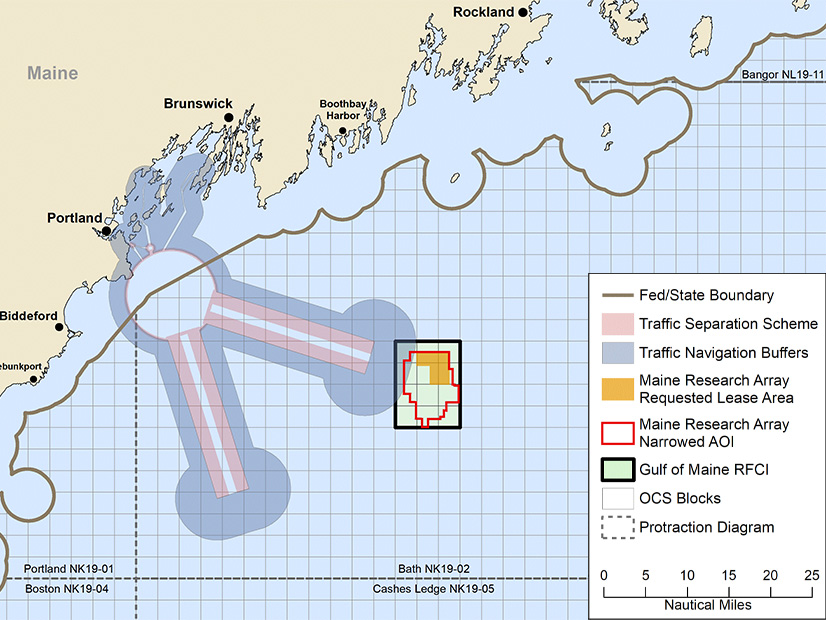Initial assessment of the offshore wind energy research lease Maine is seeking shows it would cause minimal environmental impact.
The report, by the U.S. Bureau of Ocean Energy Management, is another step toward wind power development in the Gulf of Maine but does not authorize any construction or operation. It entails only surveys, monitoring and placement of meteorological buoys.
Potential negative factors resulting from this work could include air emissions, noise, lighting, seafloor disturbance, entanglements and routine vessel discharges.
Publication of the draft assessment in the Federal Register on Friday started a 30-day comment period, during which two virtual public meetings will be held as BOEM seeks further input before finalizing the assessment.
BOEM rates potential impact at four levels: negligible, minor, moderate and major. Every effect of the research lease was projected as either negligible or minor — including on commercial and recreational fishing, which has been predicted to sustain a major adverse effect in the environmental impact studies prepared for construction and operation of the other wind farms.
Maine is positioning itself to be a pioneer in floating wind and a leader in the industry expected to develop around it. One of its state university campuses has a robust research-and-development program, and it already has floated a small-scale offshore wind turbine in state waters.
A key part of this is the research array Maine is seeking permission to build within a 10,000-acre zone 20 nautical miles offshore — up to 12 turbines with a total nameplate capacity of up to 144 MW.
The offshore wind farm proposals in the pipeline so far are all on the Outer Continental Shelf off the middle and northeast Atlantic Coast, with towers on seabed foundations in relatively shallow waters. The Gulf of Maine, like most of the Pacific Coast, is too deep for fixed-bottom development and will need to rely on floating wind technology that still is being developed and has minimal worldwide operational history.




